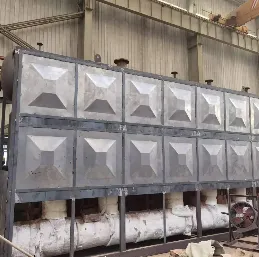Waste Heat Boilers: A Sustainable Solution for Industries
In an era where energy efficiency and sustainability are paramount, tullantı istilik qazanıs are emerging as essential components for industries looking to optimize their operations. These innovative systems harness excess heat generated during industrial processes, converting it into usable energy. In this article, we will explore the benefits of incinerator waste heat boilers, the role of waste heat recovery boilers in cement plants, and the advancements in waste heat recovery boilers in China.

Incinerator Waste Heat Boiler: A Dual Benefit Solution
Incinerator waste heat boilers are designed to capture the thermal energy produced during the incineration of waste materials. This type of boiler not only helps in reducing waste volume but also maximizes energy efficiency by recovering heat that would otherwise be lost.
By utilizing an incinerator waste heat boiler, industries can significantly lower their energy costs while minimizing their environmental footprint. These boilers can be integrated into existing incineration systems, allowing for seamless operation and enhanced energy recovery. The heat generated can be used for electricity production, heating processes, or even district heating systems, providing a versatile solution that benefits both the environment and the bottom line.
Investing in incinerator waste heat boilers is a smart choice for businesses looking to adopt greener practices while achieving substantial cost savings.
Waste Heat Recovery Boiler in Cement Plant: Enhancing Efficiency in Manufacturing
In cement manufacturing, energy consumption is a major concern. Waste heat recovery boilers play a crucial role in enhancing efficiency by capturing waste heat from processes like kiln operations and utilizing it to produce steam or hot water.
Implementing a waste heat recovery boiler in a cement plant can lead to significant energy savings. The recovered heat can be used to power auxiliary processes, thus reducing reliance on traditional energy sources. This not only cuts operational costs but also helps cement manufacturers comply with environmental regulations by lowering greenhouse gas emissions.
Furthermore, the installation of waste heat recovery boilers can improve the overall efficiency of cement production, leading to higher profitability. As the industry continues to prioritize sustainability, investing in waste heat recovery solutions is essential for staying competitive.
Waste Heat Recovery Boiler China: Leading the Way in Energy Efficiency
China is at the forefront of waste heat recovery boiler technology, making significant strides in developing innovative solutions that cater to various industries. The country has recognized the importance of energy efficiency and sustainability, and waste heat recovery boilers are a key component of this strategy.
Chinese manufacturers are producing a wide range of waste heat recovery boilers designed for different applications, from industrial processes to power generation. With advanced technology and a focus on energy optimization, these boilers are helping industries reduce their carbon footprints while enhancing operational efficiency.
In addition to traditional sectors like cement and steel, waste heat recovery boilers are being adopted in emerging industries, reflecting China's commitment to sustainable development. By investing in waste heat recovery boiler technology, companies can contribute to a greener future while reaping the benefits of improved energy efficiency and cost savings.
Conclusion: Embrace Waste Heat Boilers for a Sustainable Future
In conclusion, tullantı istilik qazanıs represent a powerful tool for industries aiming to enhance energy efficiency and reduce environmental impact. From incinerator waste heat boilers that maximize energy recovery from waste processing to waste heat recovery boilers in cement plants driving operational savings, these systems are vital for sustainable practices. Furthermore, China's advancements in waste heat recovery technology position it as a leader in this essential field.
Investing in tullantı istilik qazanı solutions not only boosts your operational efficiency but also demonstrates your commitment to a sustainable future. Embrace the power of waste heat recovery today and unlock a new level of energy efficiency for your business!
-
Waste Heat Recovery Boilers: Maximizing Efficiency and SavingsXəbərlərJul.18,2025
-
The Future of Thermal Heating SystemsXəbərlərJul.18,2025
-
Industrial Boilers and Heat Recovery Steam GeneratorsXəbərlərJul.18,2025
-
Hot Water Boilers for Every Need: Your Go-To GuideXəbərlərJul.18,2025
-
Hot Topics in Industrial Steam GenerationXəbərlərJul.18,2025
-
Electric Steam Boilers: Efficient and Reliable HeatingXəbərlərJul.18,2025

